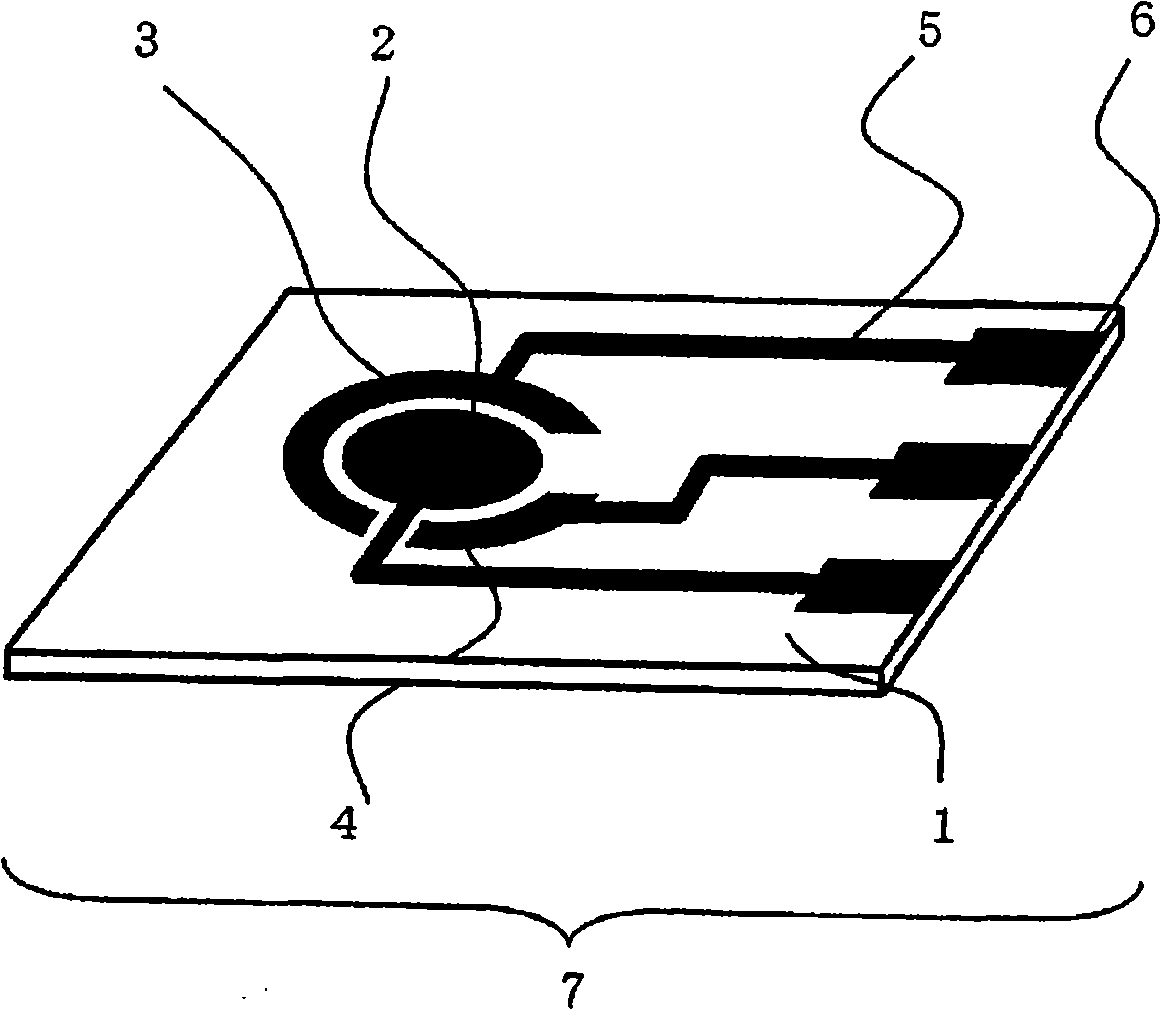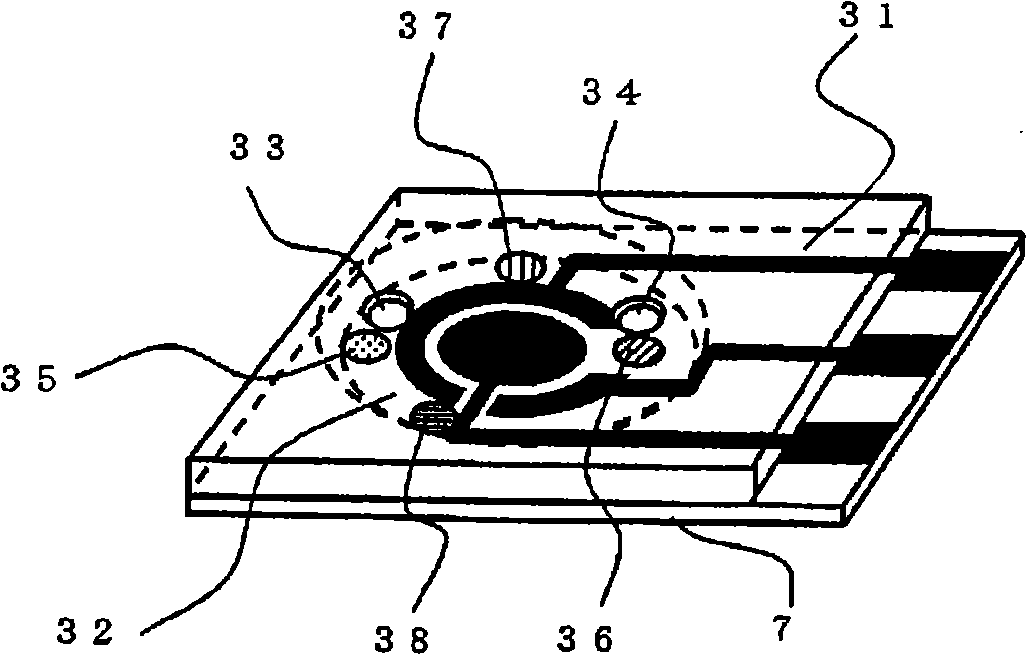Pyrophosphoric acid sensor and snp typing sensor utilizing the same
A technology of sensors and pyrophosphoric acid, which is applied in the direction of instruments, biochemical instruments, analytical materials, etc., can solve problems such as inability to present stable characteristics
- Summary
- Abstract
- Description
- Claims
- Application Information
AI Technical Summary
Problems solved by technology
Method used
Image
Examples
Embodiment approach 1
[0069] figure 1 It is a perspective view showing an electrode substrate according to an embodiment of the present invention. A measurement electrode 2 , a counter electrode 3 , and a reference electrode 4 are formed on an insulating substrate 1 . Each electrode can be selected from noble metals such as gold, platinum, and palladium, carbon, etc., however, gold is preferably selected from the standpoint of stability of the surface state and the like.
[0070] As the reference electrode 4 , it is more preferable to use a reference electrode that shows no polarity in view of the stability of the potential in the solution. A silver-silver chloride electrode is preferable in terms of ease of operation and the like. The formation method of silver-silver chloride electrode can enumerate following method: Carry out silver plating on the reference electrode 4 positions of the electrode pattern that forms with gold and platinum etc., apply voltage in sodium chloride aqueous solution, ...
Embodiment approach 2
[0093] Figure 5 A perspective view showing a pyrophosphate sensor according to one embodiment of the present invention. Such as Figure 5 As shown, a first reaction reagent layer 35 , a second reaction reagent layer 36 , a third reaction reagent layer 37 , and a fourth reaction reagent layer 38 are stacked on the electrode substrate 7 . At this time, in order not to mix the first reagent layer 35 , the second reagent layer 36 , the third reagent layer 37 , and the fourth reagent layer 38 , known techniques can be used. For example, when forming the first reagent layer, a mixed layer with a polymer material such as carboxymethyl cellulose (CMC) is formed, whereby the second reagent layer 36 can be made into a water-soluble film. Next, a hydrophilic polymer film such as polyvinylpyrrolidone (PVP) is formed on the second reaction reagent layer 36 . Next, when forming the fourth reagent layer 38, the sample is dissolved in a solvent such as toluene, which is poorly soluble in ...
Embodiment approach 3
[0096] Fig. 6 is a perspective view showing a SNP typing sensor according to an embodiment of the present invention. Although the SNP typing sensor with image 3 Similarly, it is composed of the electrode substrate 7 and the cover substrate 31, but on the cover substrate 31, in addition to the measurement chamber 41, a PCR chamber 42 and a flow channel for connecting the measurement chamber 41 and the PCR chamber 42 are provided. Road 43. From the injection hole 33, together with the DNA sample solution of the SNP typing measurement object, inject a DNA probe comprising a sequence complementary to the SNP sequence of the DNA and having an SNP site, DNA polymerase, and deoxyribonucleotides. When performing a PCR reaction by using a heater or the like to perform a temperature cycle in the PCR chamber 42, the SNP site of the DNA of the SNP typing measurement object is complementary to the DNA probe having the SNP site. The DNA probe is extended and pyrophosphate is generated. ...
PUM
 Login to View More
Login to View More Abstract
Description
Claims
Application Information
 Login to View More
Login to View More - R&D
- Intellectual Property
- Life Sciences
- Materials
- Tech Scout
- Unparalleled Data Quality
- Higher Quality Content
- 60% Fewer Hallucinations
Browse by: Latest US Patents, China's latest patents, Technical Efficacy Thesaurus, Application Domain, Technology Topic, Popular Technical Reports.
© 2025 PatSnap. All rights reserved.Legal|Privacy policy|Modern Slavery Act Transparency Statement|Sitemap|About US| Contact US: help@patsnap.com



